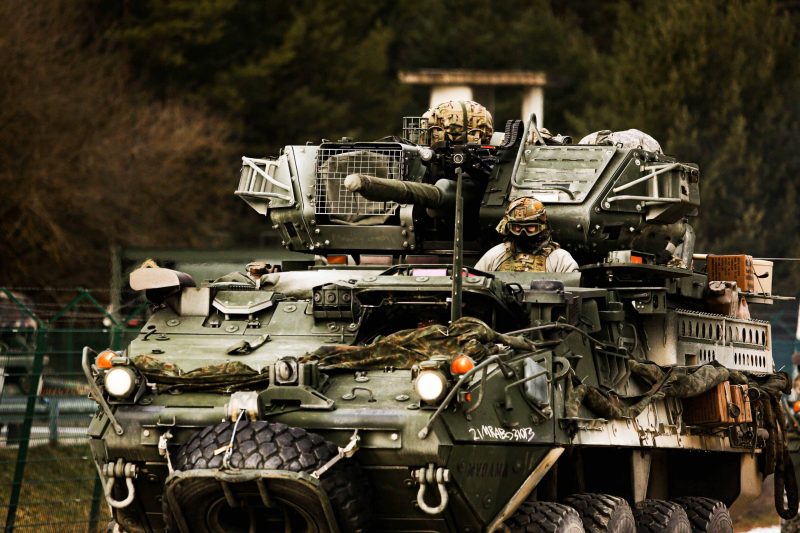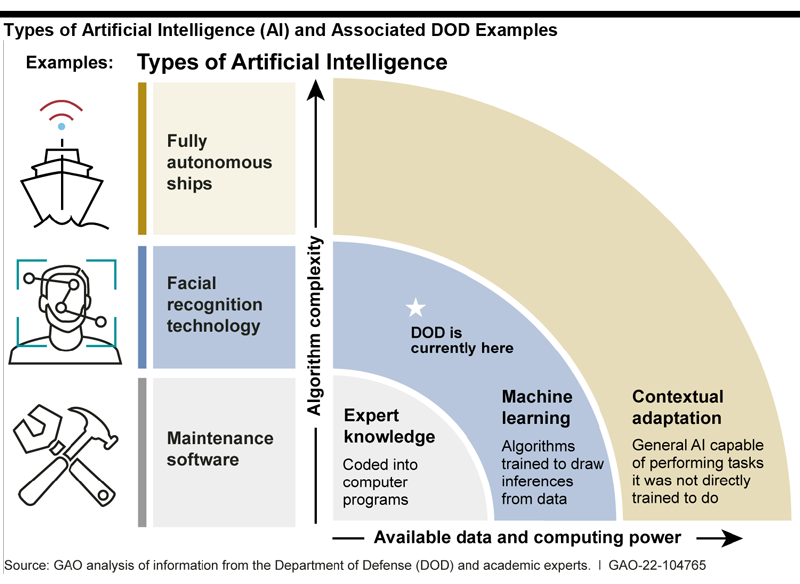Is the DoD Ready for Artificial Intelligence (AI)?
Artificial intelligence, or AI, is a transformative technology poised to change the future battlefields and the pace of threats we face. But having said that, SAIC reports that less than 1 in 5 government leaders say they are “likely” to adopt AI in the next year. The Study cited that the most significant obstacle to implementation besides readiness is clearly the maturity of policy and oversight.
The U.S. Department of Defense claims that more than 600 AI projects are already underway. For the fiscal year 2022, DOD spent $14.7 billion for science and technology programs and $874 million to directly support its AI efforts. They recognize the competitive threat of not leading the way and that building out the unknowns will have to be done in many cases through parallel efforts. The CDAO, or Chief Digital and artificial Intelligence office, has identified data fidelity as a top priority in implementing AI, believing in the adage of “garbage in, garbage out.”
The Competitive Race

The United States, unlike its advisories, has adopted AI Ethical Principles that have set out to protect us from a “run-away train” situation along with AI receptivity. Agencies see the value in DevSecOps, but nearly 40 percent say they need more technical skills to implement any meaningful solution. A narrowcast to the AI environment is required between the demand for perfection and the continual fusion of larger and larger datasets. This narrow focus will allow a compendium of actions to be planned to meet our needs with the near 100 percent accuracy we require.
The number of current applications being pursued indicates the importance of AI, but other nations are making significant investments that threaten the U.S. military and technological and operational advantage. It is clear that when working with highly complex concerns, correctly employed AI will offer decisive advantages in predictive and responsive actions.
Examples of AI applications in the commercial market are discussed daily, but AI will become invaluable in larger, more unpredictable areas. Examples of these types of applications have been addressed by SAIC. Plotting the trajectory of space junk is an ever-increasing concern as more and more is launched and the operational importance increases. Tracking every satellite to every stray piece of space trash is the perfect application for AI and AI Tools. Other applications involve measuring atmospheric changes caused by changing levels of CO2.
As the complexity grows to include greater and greater theaters of operation, the greater the propensity for errors. So, as we try to implement AI solutions that incorporate a whole battle plan fusing larger and larger data sets together, the opportunity for an operational error increases. Countries willing to have friendly fire incidents or civilian casualties are free of the same need for accuracy demanded by the United States.
In looking at the breadth and width of an application, some have coined the phrases Narrow beam or broad beam activity. A narrow beam activity has limited data sets with a limited number of responses. As you move to a Broad beam AI solution, the data sets become more complex, and the potential reactions grow exponentially. For this reason, SAIC has developed several solutions focused on Narrow beam applications that can grow over time.

The Zero Trust Strategy
The idea of a Zero Trust Strategy is tied to a connected battlefield or an AI-based solution. Adopting the mindset of Zero Trust regardless of “never trust, always verify” requires everyone to take responsibility for the security of our devices, applications, services, and assets. The Zero Trust strategy is the first of its kind for the DoD. Not a solutions architecture, the ZT document serves only as a strategy to guide defining risk areas.
Platforms and Tools
Koverse is a data platform developed by SAIC, featuring zero-trust and attribute-based access controls that enable data co-location. With a small enough footprint to run on a Panasonic Toughbook, this software platform addresses many of the current roadblocks in data management. By automating the ingesting and handling of data, the software amplifies human intelligence through greater situational awareness and speeds up the decision process exponentially. Data can be stripped away to affirm the actionable data gets to the right place and that extemporaneous data doesn’t cloud the response. In other words – the warfighter receives what they need, nothing more, nothing less.
Another tool in the SAIC arsenal is Tenjin, a development environment that includes pre-built algorithms and AI modules specifically designed to aid in various government mission needs. Tenjin aids in the speed of development by offering an AI library that can be drawn upon to address more routine actions to being built upon as the foundation of more complex concerns.
 Tenjin can sit on top of Koverse working natively, or its open architecture enables integration into the data system of choice.
Tenjin can sit on top of Koverse working natively, or its open architecture enables integration into the data system of choice.
Conclusion
The propensity of AI applications to become ever more complex and move into the realm of science fiction is daunting. But SAIC’s approach, described by Jason Meil, Managing Director of Artificial Intelligence, is one of walk before you run. It is evident that debates surrounding “self-awareness” will continue, but the solution that SAIC has brought to market is to offer a pragmatic approach that can be built upon for an ever-increasing and complex concern. To create a foundation for a growing complexity.
It seems clear from the Study that the Joint All Domain Command and Control initiative will be years in the making and will be built from several discrete data sets and system requirements. The completion point will remain elusive with dynamic and complex algorithms coupled with an ever-increasing data fidelity from the myriad of sensors.

